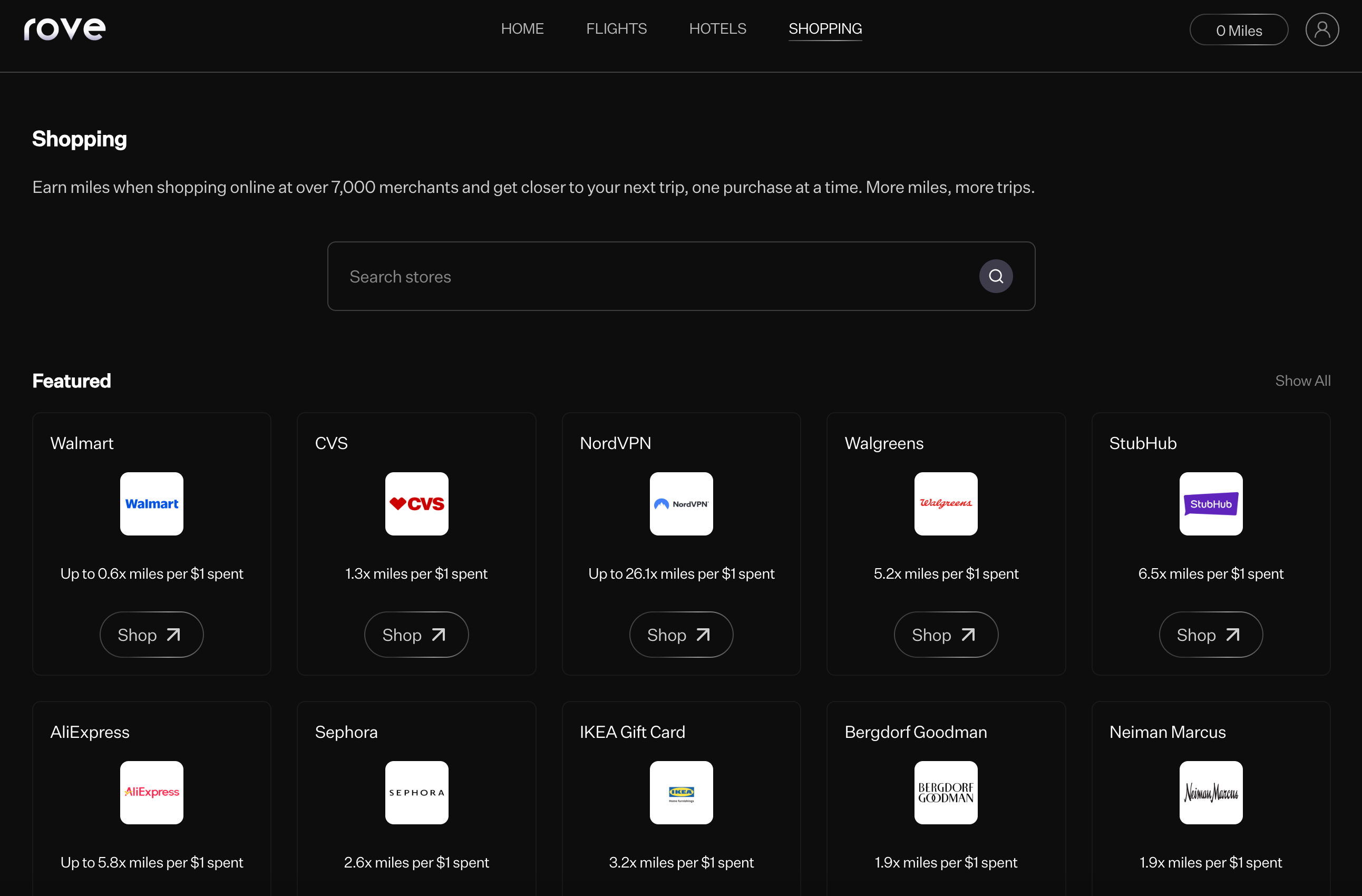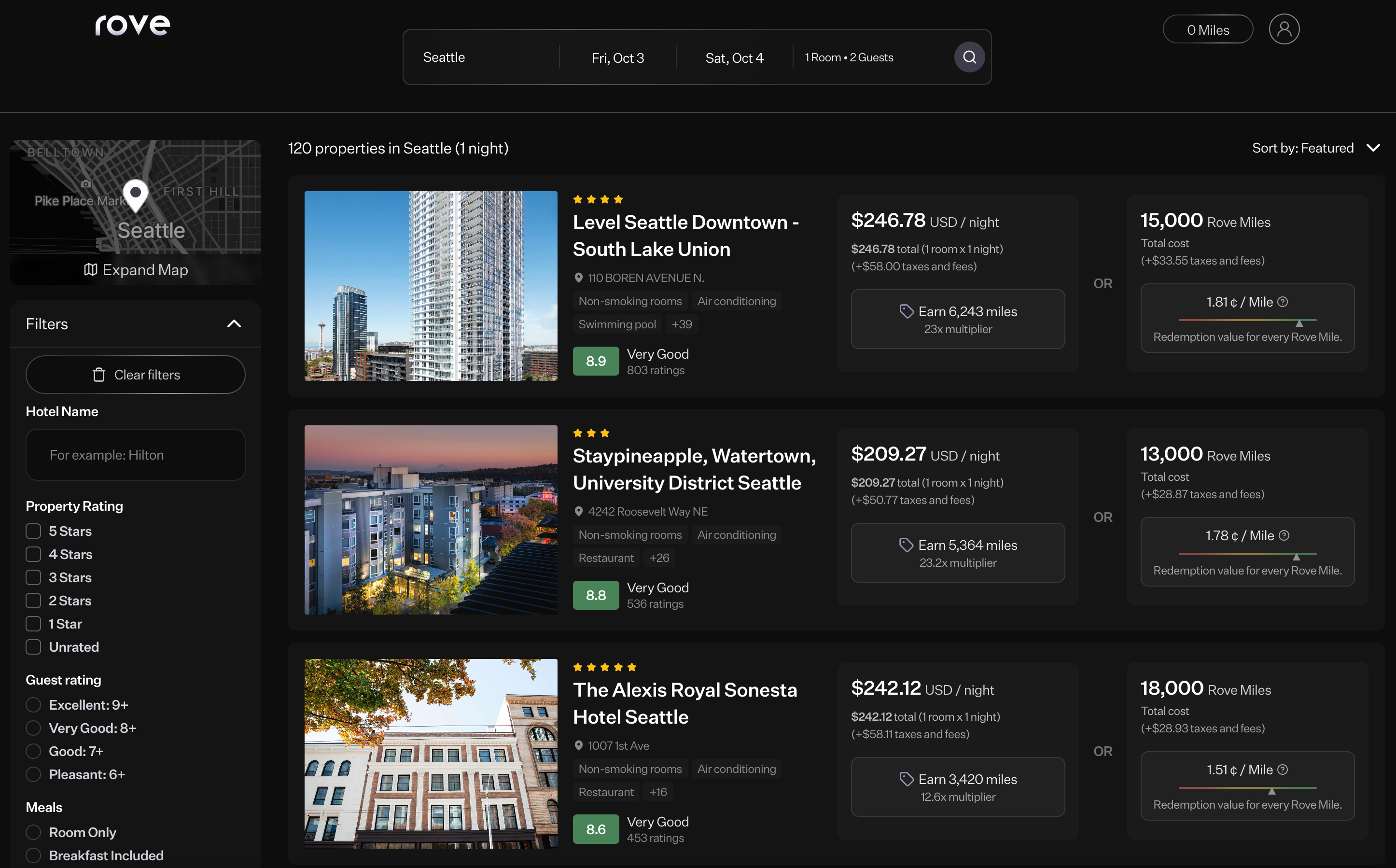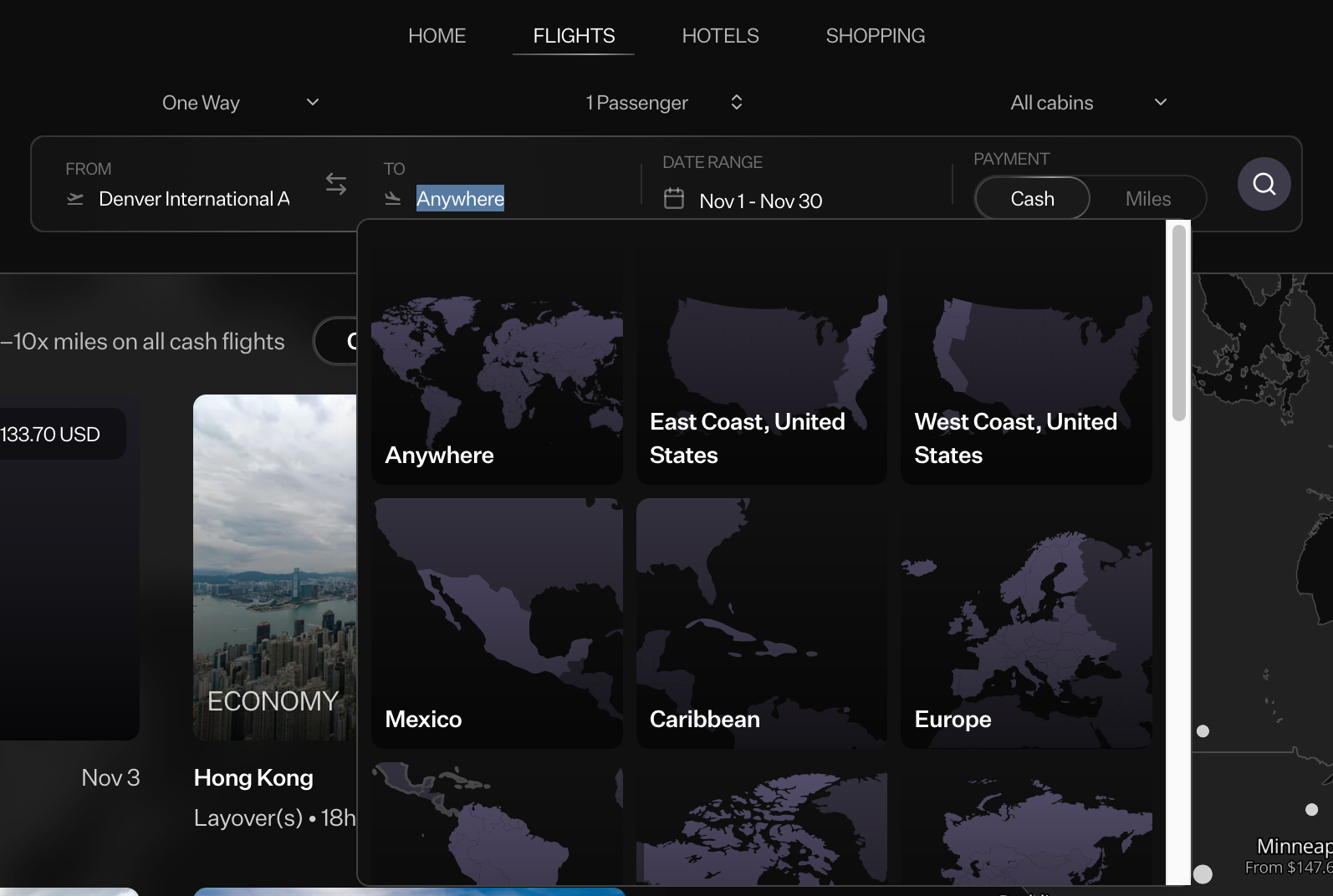Just as airfare prices fluctuate constantly, so does the landscape of points and miles. The newest loyalty program on the scene is Rove Miles, which promises to help travelers earn rewards on flights and hotels without a credit card.
Rove Miles combines several familiar features of shopping and credit card travel portals, so it will feel intuitive to many of our readers. But is it worth adding another currency to your portfolio?
Here’s an overview of how this recently launched program works so you can decide if Rove Miles fits into your points and miles strategy.
Related: This brand-new travel app offers a loyalty program for boutique hotels
What is Rove Miles?

Rove Miles is a new loyalty program that launched earlier this year. It’s geared toward younger travelers and those who can’t qualify for a travel rewards credit card. Rove allows members to earn and redeem miles on airfare and hotel bookings through its platform, as well as transfer miles to a handful of airline and hotel partners.
You can join Rove for free and sign up with your phone number. To access Rove’s features, you’ll need to fill in additional information like your name, birthdate, email and country of residence. You can also enter your home airport and cities you’d like to visit.
Then, you’re ready to start earning miles.
Earning and redeeming Rove miles
Rove combines common features of shopping portals like Rakuten and credit card travel booking platforms like American Express Travel. You can visit a merchant by clicking through Rove’s site (or downloading the browser extension) to earn Rove miles on your everyday purchases.

You can also book flights and hotels through Rove. The hotel search feature conveniently gathers everything you need to know in one spot: the price in cash and miles, how many miles you’ll earn on a cash booking and how much value you’ll get per mile if you book an award stay. You can also sort your results by earning rate and redemption value.

Daily Newsletter
Reward your inbox with the TPG Daily newsletter
Join over 700,000 readers for breaking news, in-depth guides and exclusive deals from TPG’s experts

One feature that makes Rove stand out from many credit card booking platforms is the ability to earn miles faster and redeem them at a higher value. My hotel search turned up earning rates ranging from an impressive 25 miles per dollar spent to as low as 10 miles per dollar spent, which is still competitive with the top travel credit cards.
For instance, I could earn 23 miles per dollar spent in October on a one-night stay at Level Seattle Downtown — South Lake Union. Alternatively, I could redeem 15,000 Rove miles plus $34 in taxes and fees for a value of 1.81 cents per mile. That’s a solid redemption, considering you’ll get at most 2 cents per point with Chase’s Points Boost if you hold the top-tier Chase Sapphire Reserve® (see rates and fees) and only 1 cent per point through most other credit card platforms. However, you can often get more value from your points and miles by transferring them to travel partners — more on that later.
When it comes to booking flights, Rove takes a page out of Seats.aero‘s book by letting you search for routes from your home airport to a desired region, including “anywhere.” This is handy if your travel plans are flexible and you’re looking for the best deal.

Supposedly, you can earn 1 to 10 miles per dollar spent on cash tickets, but it’s not as easy to see your potential earnings on flights as with hotels. You must go to the booking page to determine how many miles you’d earn.

In the case of this nonstop Alaska Airlines flight from Denver to Seattle, the answer was a disappointing 1 mile per dollar. This is in addition to the United Airlines miles I’d earn on my ticket, as long as I added my frequent flyer number to the booking. Still, I could earn a lot more (5 points per dollar) by booking through Chase Travel℠ with my Chase Sapphire Preferred® Card (see rates and fees) or Capital One Travel with my Capital One Venture X Rewards Credit Card, for example.
As you can see, Rove’s earning rates can be worthwhile, but they vary widely depending on the individual flight or hotel. We always recommend comparing prices with other booking platforms and the hotel or airline’s website in case you find lower rates or better cancellation policies elsewhere. And don’t forget that some credit cards offer additional perks when you book through their travel platforms.
For example, the Thompson Seattle (a World of Hyatt property) is available on Rove for $308 or 19,000 miles for one night. If you held the Chase Sapphire Reserve, which gives you access to The Edit by Chase Travel, you could book the same stay for $327 or 16,368 Chase Ultimate Rewards points while accessing free breakfast for two and a $100 on-property credit, earning World of Hyatt points and elite credits on your stay.
Related: Crunching the numbers: Is it more expensive to book flights through a credit card travel portal?
Rove’s transfer partners
Rove’s booking platform isn’t the only way to redeem Rove miles. Rove also currently has 12 airline and hotel loyalty program transfer partners:
You can transfer miles to most of these programs at a 1:1 ratio, though ALL has a less desirable 1.5:1 ratio. If you take advantage of an airline award chart sweet spot, you can likely stretch your miles much further than by redeeming them through Rove’s portal.
Rove also features some deals or suggested sweet spots below select airline transfer partner listings, which could be helpful to new users wondering how best to use their miles.

Rove’s current list of transfer partners is fairly limited, but it will hopefully grow over time. And if you’re an avid user of one of these programs, Rove Miles could make sense for you.
Is Rove Miles worth using?
Rove’s tagline is “The first universal airline mile,” which seems like a stretch considering that the currency functions similarly to many others that came before it. Chase Ultimate Rewards is just one example of a transferable currency that allows you to earn bonus points on online purchases and travel bookings, as well as redeem points for travel. What Rove is doing is not exactly new.
The difference is that you don’t need the right credit card to access Rove, making this program more similar to Bilt Rewards.
As a result, Rove could appeal to anyone who can’t qualify for (or doesn’t want to pay for) a travel credit card. Rove offers an easy entry point into the world of points and miles for those still building (or rebuilding) credit and those who prefer using cash or debit cards for everyday purchases.
However, travel credit cards aren’t that far out of reach for many consumers. Some of our favorites have low or no annual fees. Even if you’re trying to build credit from the ground up, it could take as little as six months to reach the 670 credit score TPG recommends having before applying for some beginner cards, like the Chase Sapphire Preferred and the Capital One VentureOne Rewards Credit Card. Lastly, many credit cards provide something Rove doesn’t: valuable welcome bonuses.
Your best bet is to use one (or more) of these cards in tandem with Rove. In theory, you can double-dip on rewards by making cash bookings through Rove with a card that earns bonus points on travel, but I haven’t tried it yet, so I can’t confirm that Rove purchases will code as travel for all issuers.
Related: How (and why) you should earn transferable credit card points and miles
Bottom line
I don’t feel that Rove offers enough standout features to add another currency to my already complex mix. Plus, the site’s dark interface and tiny font were hard on my eyes, and the program doesn’t offer a mobile app (yet).
Still, I think Rove is a program to watch. It could become a valuable addition to the loyalty program space if it adds more user-friendly features and new transfer partners. And if you’re dipping your toe into the world of points and miles while building your credit score, Rove could be a good place to start.











